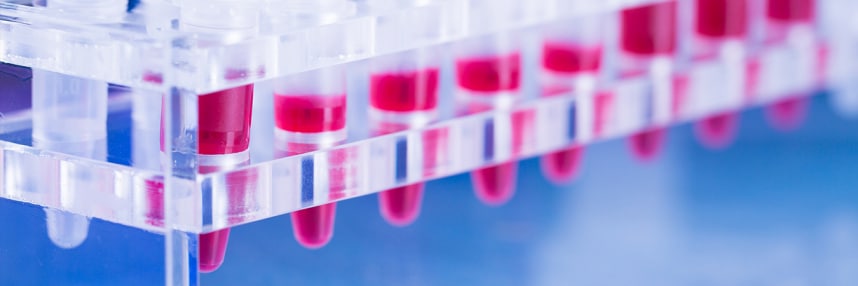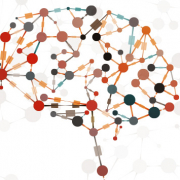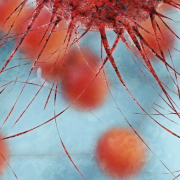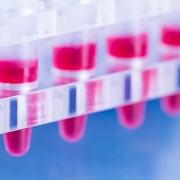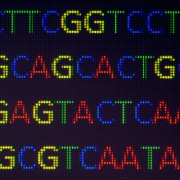Analysing the epigenome: a new way to screen for cancer
Could changes in our epigenome provide a new way to detect cancer? Recent research looks at a novel approach to screening through a new type of blood test
Recent research, published in Annals of Oncology, has indicated that liquid biopsies could provide a novel way to test for and detect cancer with a range of potential benefits for patients, including earlier detection and a less invasive screening process.
The study describes how analysing the cell-free DNA (cfDNA) present in the individual’s bloodstream for changes in the epigenome can lead to a diagnosis and, in cases where cancer is found, a high degree of accuracy regarding its origin in the body.
What is a liquid biopsy?
A liquid biopsy is a type of test that can be used to analyse an individual’s cfDNA. When cells die in the body, fragments of their DNA are shed into the bloodstream, and this is what we refer to as cfDNA. In the same way that non-invasive prenatal testing looks at fetal DNA in the bloodstream of a pregnant woman, these tests look for DNA shed by tumour cells to determine whether an individual has cancer.
In recent years, a number of liquid biopsy tests have been developed that can detect cancers from a blood sample. Although not yet in widespread clinical use, they offer potential benefits in the early detection of tumours, especially types that do not currently have tests or that are often asymptomatic in the early stages. They are also easier to administer and less invasive than many other forms of screening, and can test for multiple cancer types at once.
Profiling the epigenome
The new research differs from previous tests because instead of looking for the mutational signatures of cancer within the genome itself, it detects changes in the epigenome that indicate cancer, in many cases before actual signatures of cancer in the genome could be detected.
The epigenome is the umbrella term for several mechanisms that control gene activation by chemically interacting with the DNA or its associated histone molecules.
The study specifically looked at the best understood type of epigenetic modification: methylation, where small methyl groups (molecular complexes) attach to the promotor regions of genes and suppress their activity. These methyl groups remain attached to the DNA when cells die, and their genetic material is released into the bloodstream as a result.
In tumour cells, the methylation patterns on the DNA are often quite different from those found in healthy cells. Researchers based at several centres in the US and UK tried to take advantage of these differences to create a new diagnostic tool.
The researchers sequenced the cfDNA in samples from almost 2,500 people with cancer, and more than 4,000 healthy people. The sample population contained more than 50 different cancer types, including breast, colorectal, oesophageal, gallbladder, bladder, gastric, ovarian, head and neck, lung, lymphoid leukaemia, multiple myeloma, and pancreatic cancer. Machine learning approaches were then used to create an algorithm based on the data from those samples.
Sensitivity and specificity
All medical tests, whether involving genomics or not, need to demonstrate a high degree of accuracy. We can judge the accuracy of a test through measuring its sensitivity and specificity.
Sensitivity is the rate at which the test correctly detects the condition in an affected individual. For example, a test with 99% sensitivity would return a 1% false negative rate, meaning 1% of people with the condition would avoid detection.
Specificity measures the rate at which the test correctly detects an absence of the condition in a healthy individual. In other words, a test with 98% specificity would provide false positive results in 2% of cases, suggesting that 2% of healthy individuals had the condition when in fact they did not.
The results, as outlined in the paper, showed that the test had an excellent specificity rate of 99.3%, meaning that it very rarely returned false positives. Its sensitivity rate, however, varied significantly depending on the stage of the cancer. Only 18% of stage I cancers were detected, increasing to 43% at stage II, 81% at stage III and 93% for stage IV.
Where cancers were detected, the test was able to predict with over 90% accuracy where the cancer had originated, which could potentially be helpful for decision-making in treatment.
–


